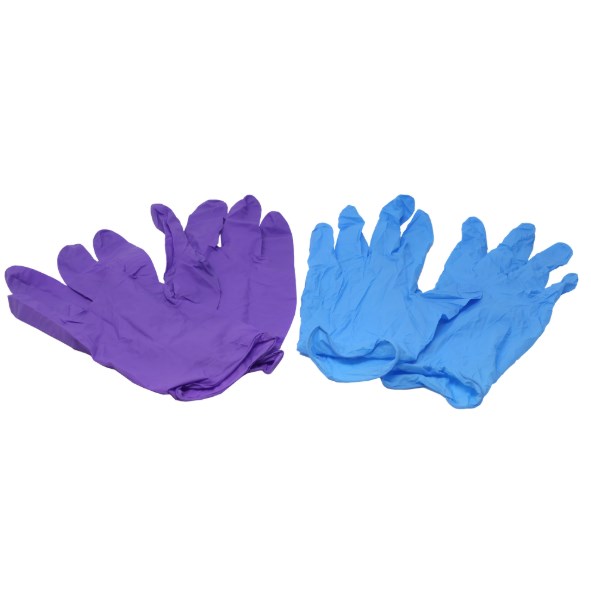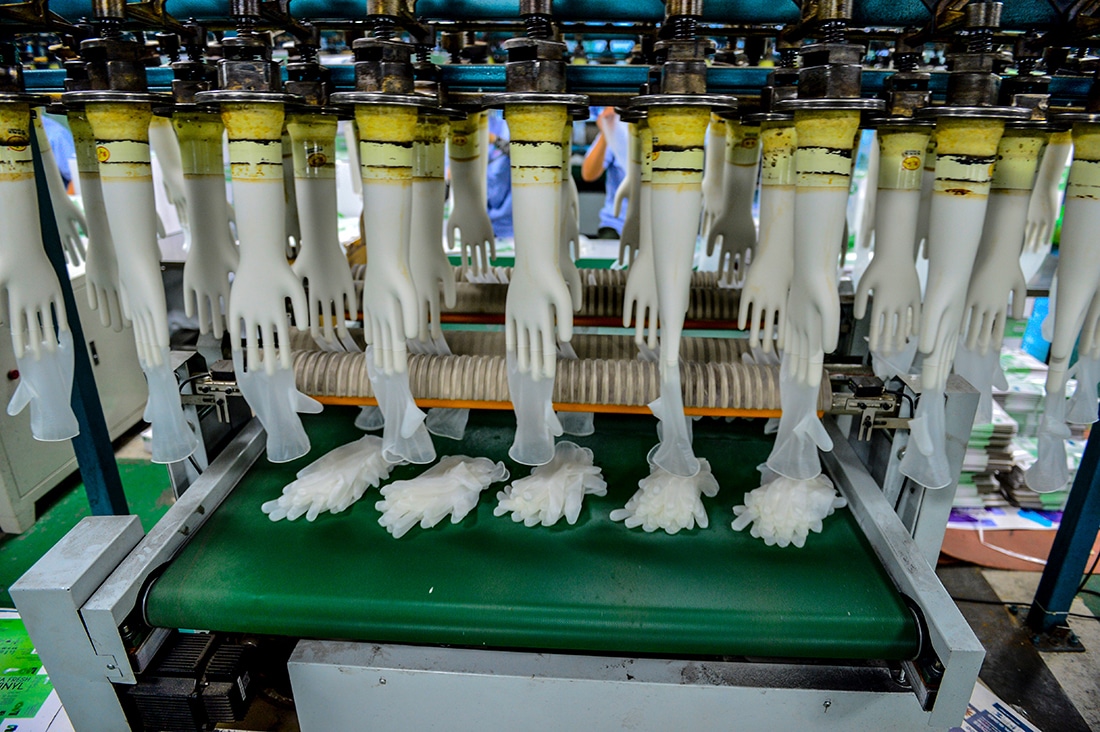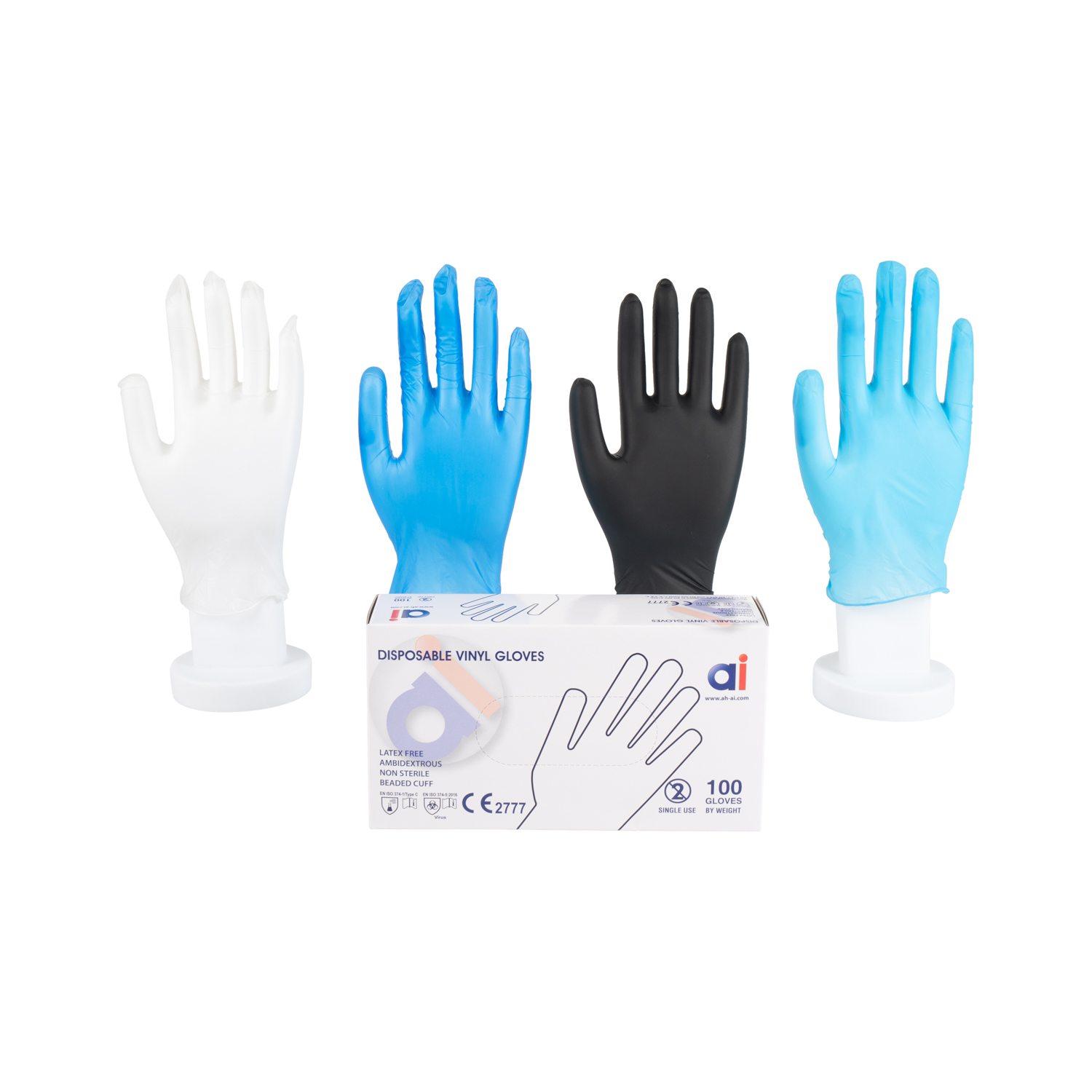Nitrile gloves are a cornerstone of safety in industries like healthcare, laboratories, and food service, valued for their durability, chemical resistance, and comfort. Made from synthetic rubber, these gloves offer superior puncture resistance and a secure fit, making them ideal for tasks involving exposure to chemicals, oils, or biohazards. Among the various colors available, blue and purple nitrile gloves are two of the most prevalent. But what sets them apart, and does their color serve a purpose beyond aesthetics? This article explores the differences between blue and purple nitrile gloves, their uses, and how to choose the right one for your needs, optimized for clarity and searchability.
Understanding Nitrile Gloves
Nitrile gloves are widely used across multiple sectors due to their protective qualities. They are particularly popular in:
- Healthcare: For medical examinations, surgeries, and handling biohazards like blood and bodily fluids.
- Laboratories: For scientific research and handling chemicals.
- Industrial Settings: For tasks requiring protection against oils, chemicals, and other substances.
- Food Service: To maintain hygiene and prevent cross-contamination.
The color of nitrile gloves often serves as a visual cue, helping users quickly identify the glove type or its intended application. This color-coding can enhance safety, efficiency, and compliance with industry standards, such as distinguishing nitrile from latex gloves to avoid allergic reactions.
Blue Nitrile Gloves: The Standard Choice
Blue nitrile gloves are the most commonly used in medical and clinical environments, and their color serves several practical purposes:
- Latex-Free Identification: Blue gloves are easily distinguishable from latex gloves, which are typically white or clear. This is critical in healthcare settings where latex allergies are a concern, ensuring both patient and staff safety.
- Visibility for Safety: The blue color provides excellent visibility, making it easier to detect contaminants, stains, or tears on the glove. This is essential for maintaining hygiene and ensuring glove integrity during procedures.
- Versatility: Blue nitrile gloves are used for a wide range of applications, including:
Medical examination
Surgical procedures
Administering vaccines
Drawing blood
General laboratory work
Blue gloves are often preferred for their cost-effectiveness and widespread availability, making them a staple in hospitals, clinics, and laboratories. Their lighter color also makes them practical for environments where spotting glove failure is a priority. According to Gloves.com, blue nitrile gloves are the standard in medical settings due to their ease of use and visibility.
Purple Nitrile Gloves: Specialized Protection
Purple nitrile gloves are designed for more specialized applications, particularly in high-risk medical scenarios. Their distinct color and enhanced properties make them a preferred choice for specific tasks:
- High-Risk Applications: Purple gloves are often used in chemotherapy treatments and when handling hazardous drugs or chemicals. They are designed to offer enhanced protection against cytotoxic drugs and toxins, making them suitable for environments where chemical exposure is a concern.
- Patient-Friendly Appearance: The purple color is perceived as more calming and patient-friendly, particularly for patients undergoing sensitive treatments like chemotherapy. Some patients may find blue gloves less comforting due to their association with general medical procedures, making purple a suitable alternative.
- Chemical Resistance: Purple nitrile gloves may undergo additional testing for chemical resistance, ensuring they meet stringent safety standards for handling hazardous substances. This makes them ideal for laboratories and industrial settings where chemical exposure is common.
- Double-Gloving: In some cases, purple gloves are used in double-gloving scenarios, where a darker glove is worn underneath a lighter one to reveal punctures or tears more easily.
Purple gloves are also used in dental settings and other industries where color-coding helps differentiate glove types or purposes. For example, an X post notes that purple gloves are associated with Kimberly Clark’s trademark for exam gloves, highlighting their specialized use in medical settings.
Key Differences Between Blue and Purple Nitrile Gloves
While both blue and purple nitrile gloves offer excellent durability and protection, their differences lie in their intended use, protection level, and perception:
| Aspect | Blue Nitrile Gloves | Purple Nitrile Gloves |
| Primary Use | General medical and clinical tasks, such as exams, surgeries, and laboratory work | Specialized applications like chemotherapy and handling hazardous drugs |
| Key Features | Distinguishable from latex gloves, reduces allergy risk, easy to spot contaminants | Enhanced chemical resistance, patient-friendly appearance, quick identification |
| Color Purpose | Visibility and safety in sensitive settings like hospitals and laboratories | Identification for high-risk situations, calming effect in medical settings |
| Cost and Availability | Generally inexpensive and widely available | May be more specialized, potentially higher cost due to enhanced properties |
| Relevant Source | Gloves.com Blue Gloves | Gloves.com Purple Gloves |
- Usage: Blue gloves are the go-to for everyday medical tasks, while purple gloves are reserved for high-risk procedures requiring specialized protection.
- Protection: Both provide high levels of durability and puncture resistance, but purple gloves may offer additional chemical resistance, making them suitable for handling toxic substances.
- Perception: Purple gloves are often seen as more patient-friendly, particularly in sensitive medical contexts, while blue gloves are more utilitarian and widely recognized as the default for general use.
- Thickness Variations: Both glove types come in varying thicknesses, with thinner gloves (below 2 mil) used for dexterity in medical exams and thicker gloves (over 4 mil) for industrial tasks requiring greater protection
Choosing the Right Nitrile Glove
The choice between blue and purple nitrile gloves depends on the specific requirements of the task and environment:
For General Medical Use: Blue nitrile gloves are ideal for routine medical procedures, laboratory work, and settings where cost-effectiveness and visibility are priorities. Their widespread use and affordability make them a practical choice for most healthcare facilities.
For High-Risk Scenarios: Purple nitrile gloves are better suited for specialized tasks, such as chemotherapy, handling hazardous drugs, or working in environments with chemical exposure. Their enhanced protection and patient-friendly appearance make them a preferred choice in these contexts.
Color-Coding Benefits: In settings where multiple glove types are used, color-coding with blue and purple gloves can prevent cross-contamination and ensure compliance with safety protocols. For example, Sunline Supply highlights that colored gloves help distinguish glove types and enhance safety in medical settings.




